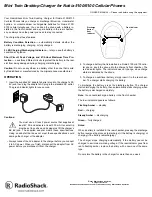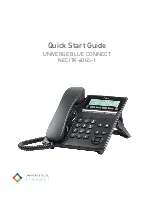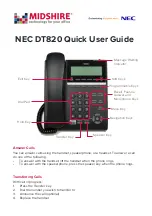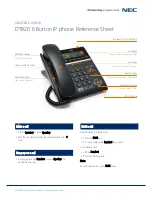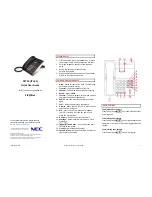
For Your Safety
69
For Your Safety
68
Bulletin 65 Supplement C, and Canada RSS 102. This device
has been tested, and meets the FCC, IC RF exposure guidelines
when tested with the device directly contacted to the body.
The FCC has granted an Equipment Authorization for this model
phone with all reported SAR levels evaluated as in compliance
with the FCC RF exposure guidelines. SAR information on this
model phone is on file with the FCC and can be found under
the Display Grant section of www.fcc.gov/oet/ea/fccid after
searching on
FCC ID: SRQ-Z812
.
For this device, the highest reported SAR value for usage against
the head is
0.77 W/kg
, for usage near the body is
1.35 W/kg
.
While there may be differences between the SAR levels of
various phones and at various positions, they all meet the
government requirements.
SAR compliance for body-worn operation is based on a
separation distance of 0.4 inches (10 mm) between the unit and
the human body. Carry this device at least 0.4 inches (10 mm)
away from your body to ensure RF exposure level compliant or
lower to the reported level. To support body-worn operation,
choose the belt clips or holsters, which do not contain metallic
components, to maintain a separation of 0.4 inches (10 mm)
between this device and your body.
RF exposure compliance with any body-worn accessory, which
contains metal, was not tested and certified, and use of such
body-worn accessory should be avoided.
Hearing Aid Compatibility (HAC) Regulations
for Mobile Phones
In 2003, the FCC adopted rules to make digital wireless
telephones compatible with hearing aids and cochlear
implants. Although analog wireless phones do not usually cause
interference with hearing aids or cochlear implants, digital
wireless phones sometimes do because of electromagnetic
energy emitted by the phone’s antenna, backlight, or other
components. Your phone is compliant with FCC HAC
regulations (ANSI C63.19- 2011). While some wireless phones
are used near some hearing devices (hearing aids and cochlear
implants), users may detect a buzzing, humming, or whining
noise. Some hearing devices are more immune than others to
this interference noise and phones also vary in the amount of
interference they generate. The wireless telephone industry has
developed a rating system for wireless phones to assist hearing
device users in finding phones that may be compatible with
their hearing devices. Not all phones have been rated. Phones
that are rated have the rating on their box or a label located
on the box. The ratings are not guarantees. Results will vary
depending on the user’s hearing device and hearing loss. If your
hearing device happens to be vulnerable to interference, you
may not be able to use a rated phone successfully. Trying out
the phone with your hearing device is the best way to evaluate it
for your personal needs.
This phone has been tested and rated for use with hearing aids
for some of the wireless technologies that it uses. However,
there may be some newer wireless technologies used in this
phone that have not been tested yet for use with hearing aids.
Summary of Contents for Maven
Page 1: ...User Guide ...
Page 48: ...Notes 84 ...
























